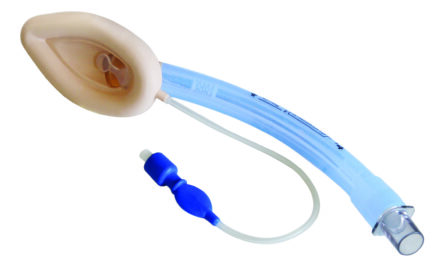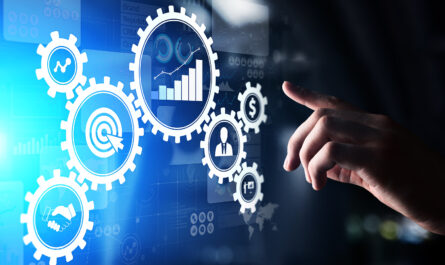Digital technologies like smartphones, wearables and connected devices are revolutionizing how healthcare data is collected and analyzed. One promising area is the development of digital biomarkers – measurable digital traces that can act as proxies for biological states and conditions. As these digital markers become more sophisticated, precise and clinically validated, they have the potential to transform how diseases are detected, monitored and treated.
What are Digital Biomarkers?
A digital biomarker refers to data captured through digital means, like smartphones, wearables or other connected technologies, that can be analyzed to provide information about health status. Some examples include:
– Mobility data from fitness trackers and smartphones that tracks steps, activity levels and sleep patterns which may indicate changes related to conditions like Parkinson’s disease, depression or Multiple Sclerosis.
– Speech and voice data captured through smartphones that analyzes tone, prosody, frequency range and other characteristics. Changes in speech patterns have been linked to neurological conditions and mental health.
– Facial expression and movement data captured through smartphone cameras that leverages computer vision to flag signs of facial paralysis, tics or other facial muscle changes seen in diseases.
– Smartphone usage metadata like typing speed, scrolling behavior and app usage patterns. Abnormal digital behaviors have been tied to cognitive decline, mental fogginess seen in conditions like Alzheimer’s.
– Environmental and contextual metadata captured by connected home devices like movement detection, temperature readings in different rooms which provide insights about functional ability and activities of daily living.
The Advantages of Digital Biomarkers
Compared to traditional clinical biomarkers that require lab tests or specialist evaluations, Digital Biomarkers offer several advantages:
Objective Data Collection: Smartphones and connected devices collect digital traces continuously and passively in real-world settings without relying on self-reports, thus providing more objective data over time.
Scalable Remote Monitoring: Digital signals can be captured anywhere and anytime without the need for in-person visits to clinics or hospitals. This allows for scalable remote monitoring of large populations.
Early Detection: Continuous monitoring for digital biomarkers may help detect subtle changes indicative of disease onset, progression or treatment response much earlier compared to intermittent clinical assessments.
Low Cost: Digital data collection leverages existing smartphones and devices that people already use, making it highly cost-effective compared to specialized medical tests or equipment.
High-Frequency Insights: Digital biomarkers captured numerous times per day provide a high-resolution view of an individual’s health status over time versus infrequent clinical assessments.
Using Digital Biomarkers in Healthcare
Smartphone-Derived Digital Biomarkers for Neurological Disorders
One area where digital biomarkers are showing promise is in early detection and monitoring of neurological disorders. Several studies have demonstrated the potential of smartphone data:
– Speech and voice-based digital biomarkers analyzed from voice recordings are being investigated for detecting mild cognitive impairment that may precede Alzheimer’s disease. Changes in vocal acoustics have been linked to loss of brain neurons.
– Mobility and activity digital biomarkers derived from smartphones’ accelerometers and gyroscopes have been able to distinguish between stages of Parkinson’s disease by pinpointing changes in gait and movement patterns.
– Touchscreen interaction and typing patterns captured on smartphones have shown the ability to flag signs of tremors, slowed movements or impaired motor coordination seen in neurological illnesses.
– Social communication metadata like call logs and message content analyzed using natural language processing techniques provide insightful digital phenotypes for conditions affecting behavioral and social engagement like autism spectrum disorder.
If validated in large clinical studies, these smartphone-derived digital biomarkers may help revolutionize how neurological illnesses are remotely monitored, enable early clinical interventions and aid drug trial outcomes assessment. Remote ambulatory monitoring using digital biomarkers also provides a more realistic view of patients in their real-world environments.
Applications in Mental Health Monitoring
Mental illnesses are also increasingly being studied using digital biomarkers. Some examples include:
– Location traces, activity levels and sleep patterns from smartphones analyzed longitudinally may provide digital signatures for mood disorders like depression and bipolar disorder where behavior and circadian rhythms are disrupted.
– Digitally-extracted vocal features from natural conversation or standardized speech samples show potential for passively and objectively monitoring symptoms of schizophrenia, such as positive symptoms seen as vocal abnormalities.
– Text and social media metadata leveraging techniques such as linguistic inquiry and word count (LIWC) analysis could flag language and content changes indicative of risk of suicide or self-harm.
– Facial expression analysis from photos and videos is being explored to detect facial signs linked to mental states, such as diminished expression seen in depression.
When combined with clinical assessments and outcomes questionnaires, these digital traits may improve remote monitoring between therapy sessions, aid earlier detection of symptom worsening, track treatment response more frequently and support clinical decision-making for mental illnesses.
Challenges and the Path Forward
While promising, digital biomarkers still face several hurdles before widespread clinical adoption:
– Validation in large prospective studies is still needed to establish reliable links between digital signals and health conditions. Reproducibility across demographics must be robust.
– Normal ranges and boundaries need defining as digital phenotypes can vary significantly between healthy individuals based on factors like age, gender, culture etc.
– Integration within electronic health records and meaningful use in clinical decision workflows has to be seamless. Concerns around data security, privacy and regulatory compliance need addressing.
– Multimodality—combining digital biomarkers with traditional clinical assessments, imaging and omics data—may yield more precise, personalized insights vs single modality analysis.
With ongoing research aiming to overcome these challenges, digital biomarkers have the potential to revolutionize many aspects of healthcare. By enabling ubiquitous, low-cost continuous health monitoring, they may find applications from optimization of wellness and prevention to facilitating precision medicine approaches for several conditions. If successful, digital biomarkers could significantly benefit global health by making high-quality healthcare provision scalable and sustainable worldwide.
*Note:
1. Source: Coherent Market Insights, Public sources, Desk research
2. We have leveraged AI tools to mine information and compile it


